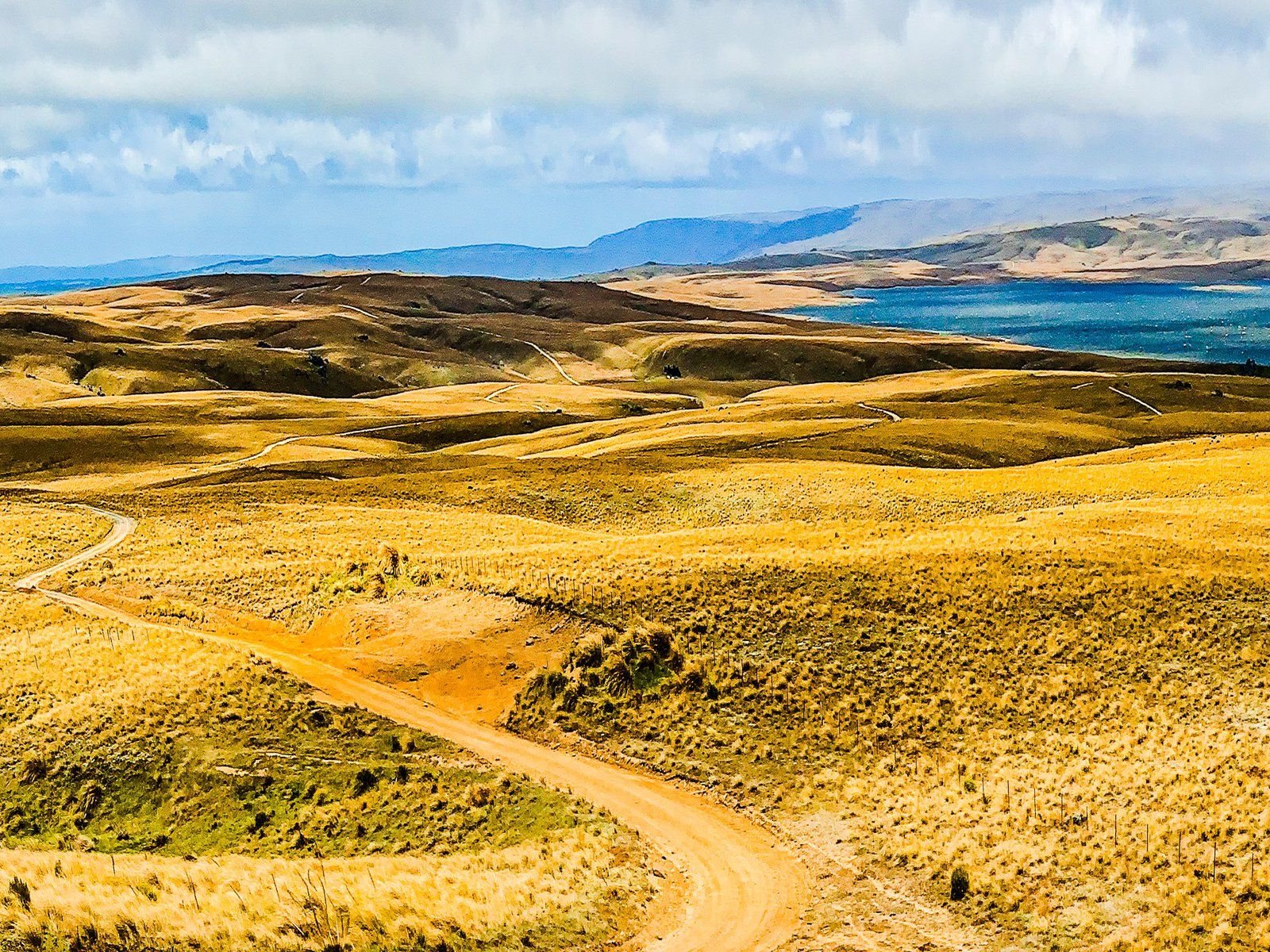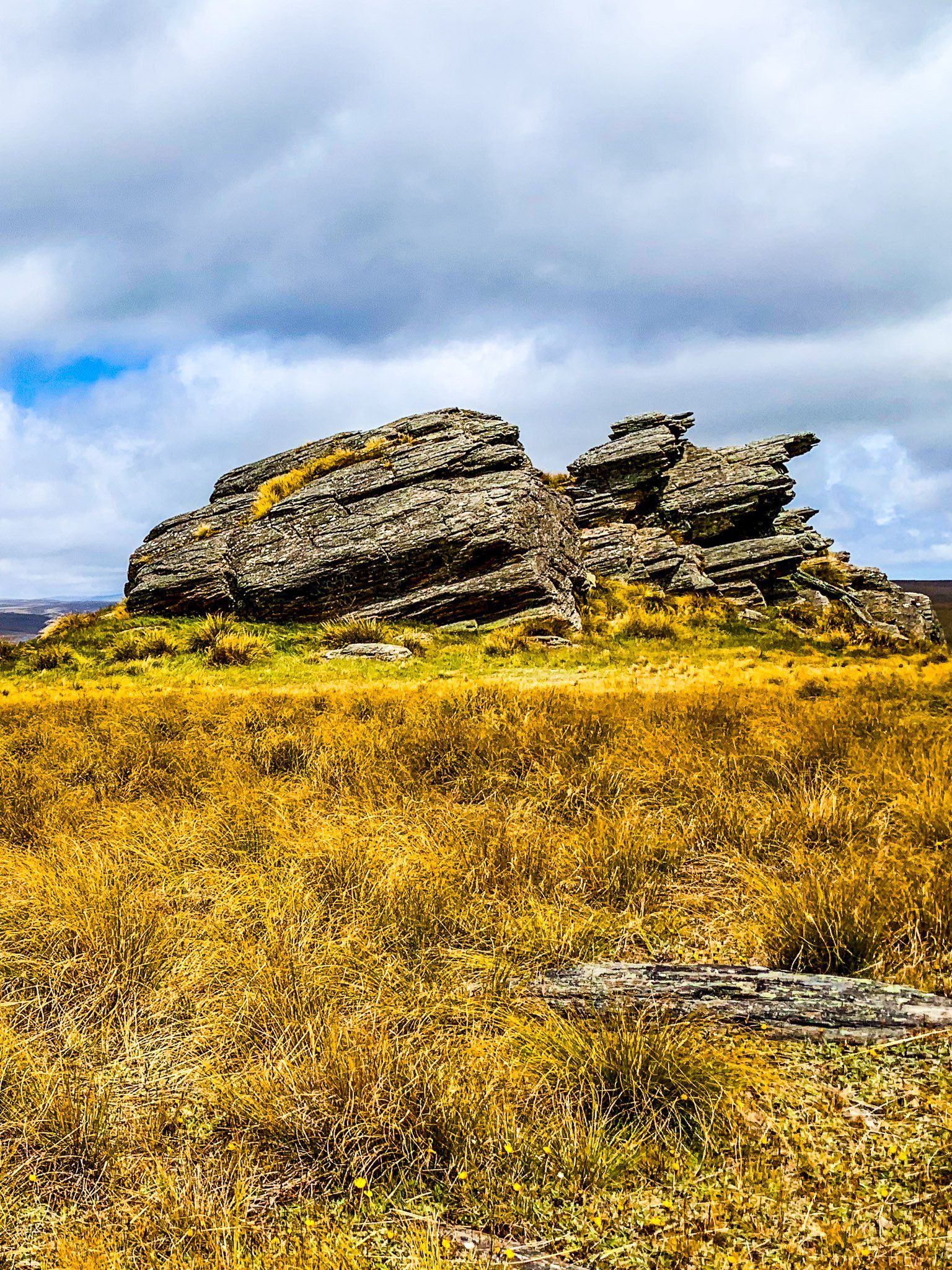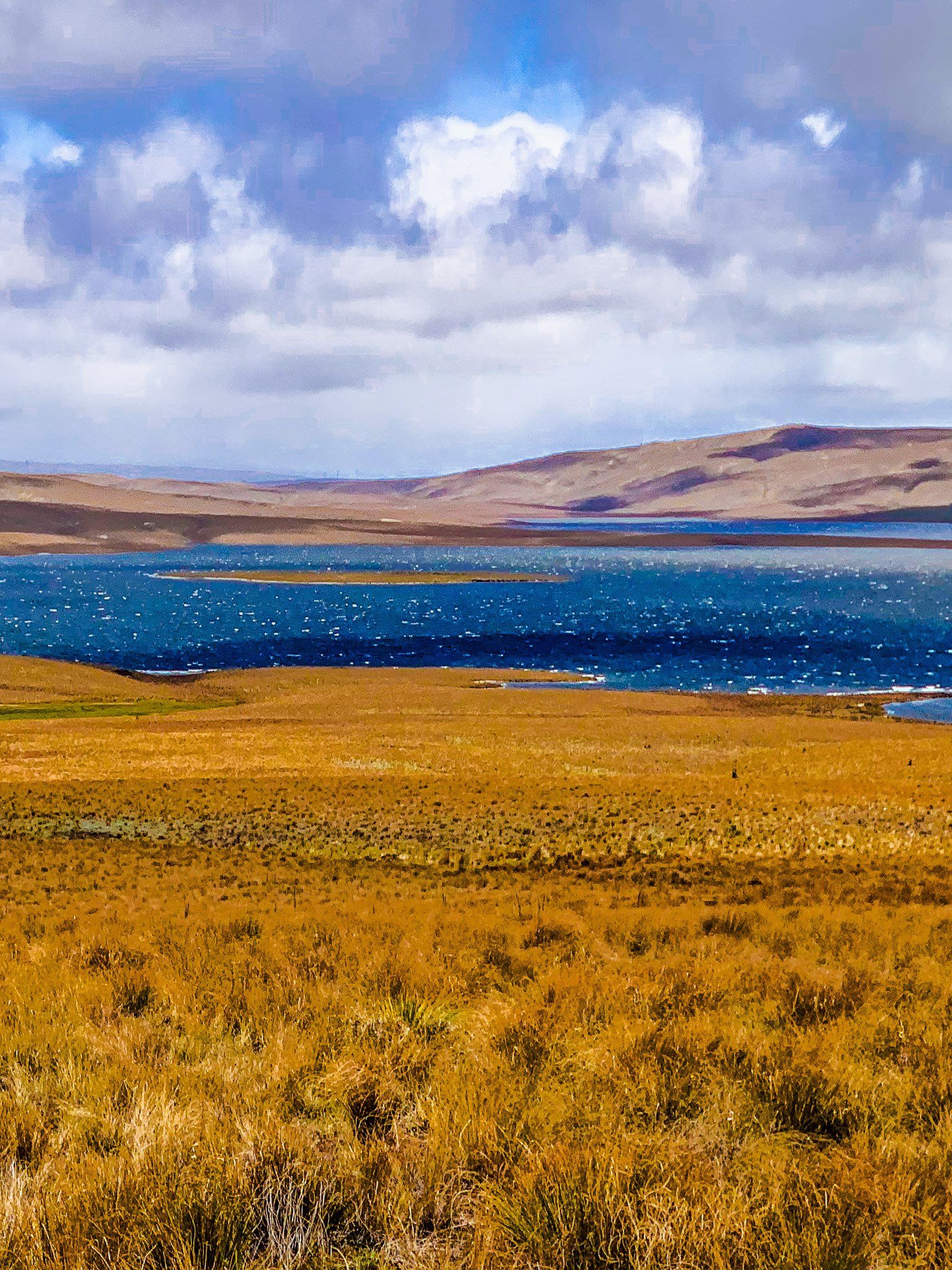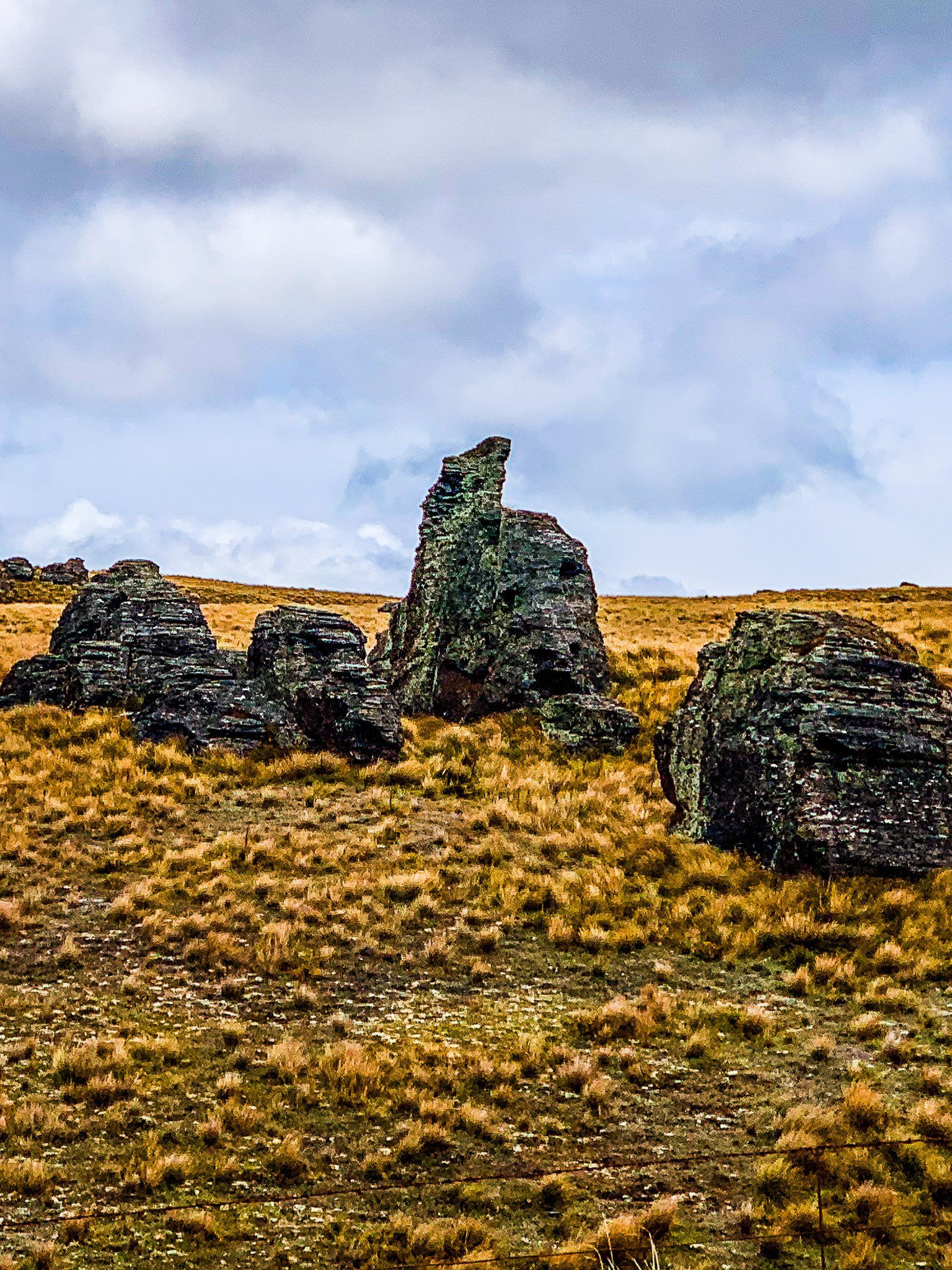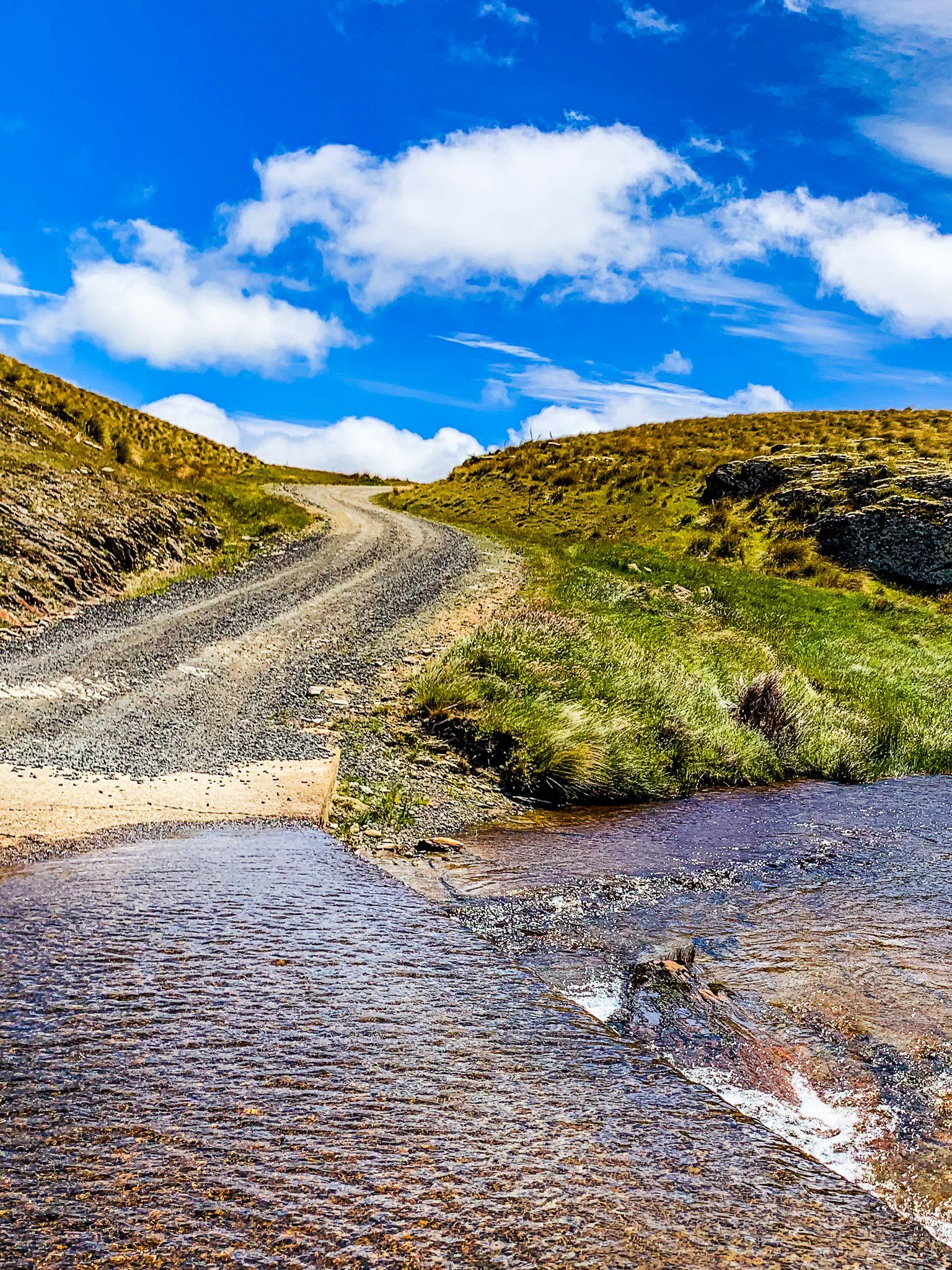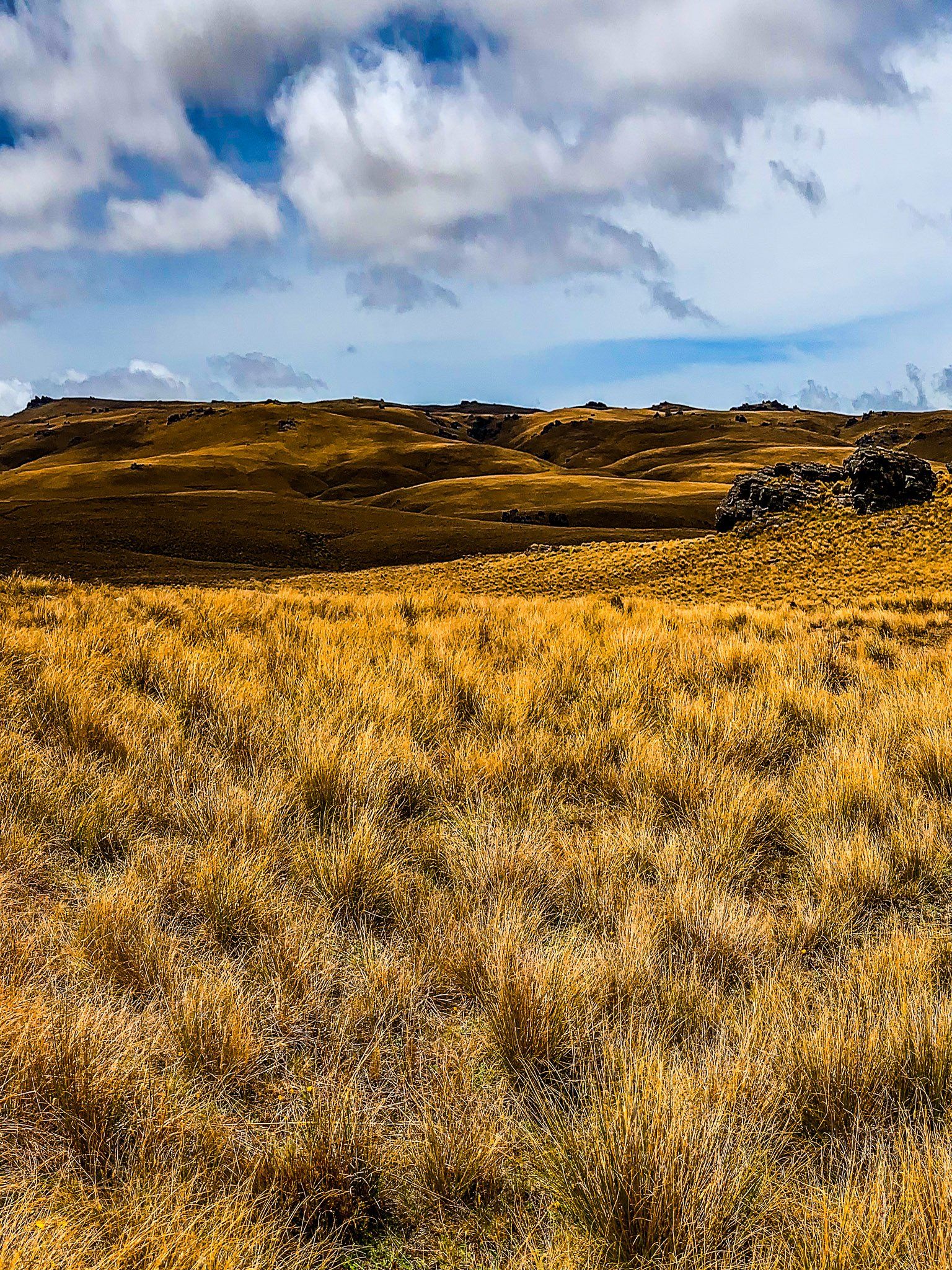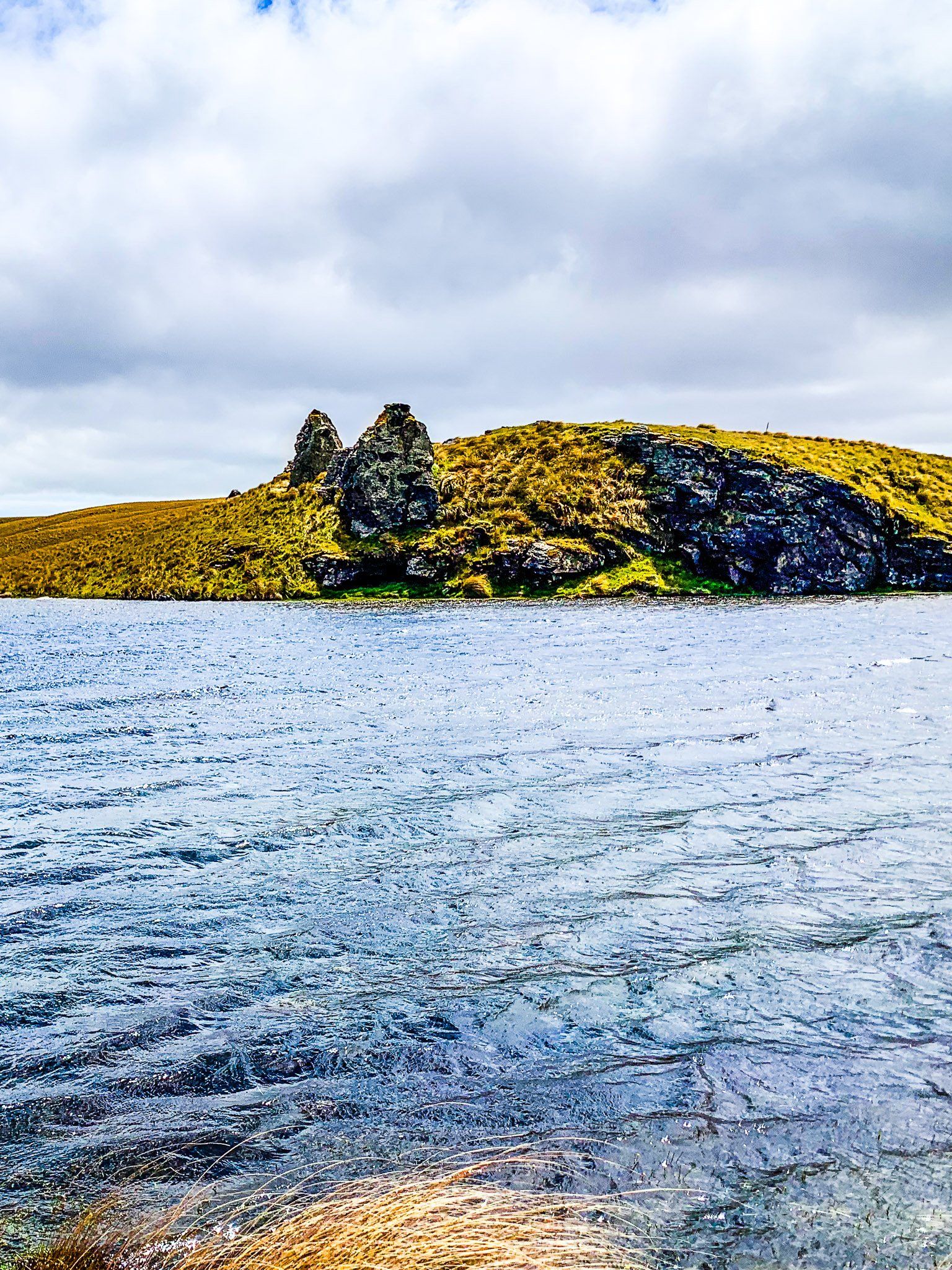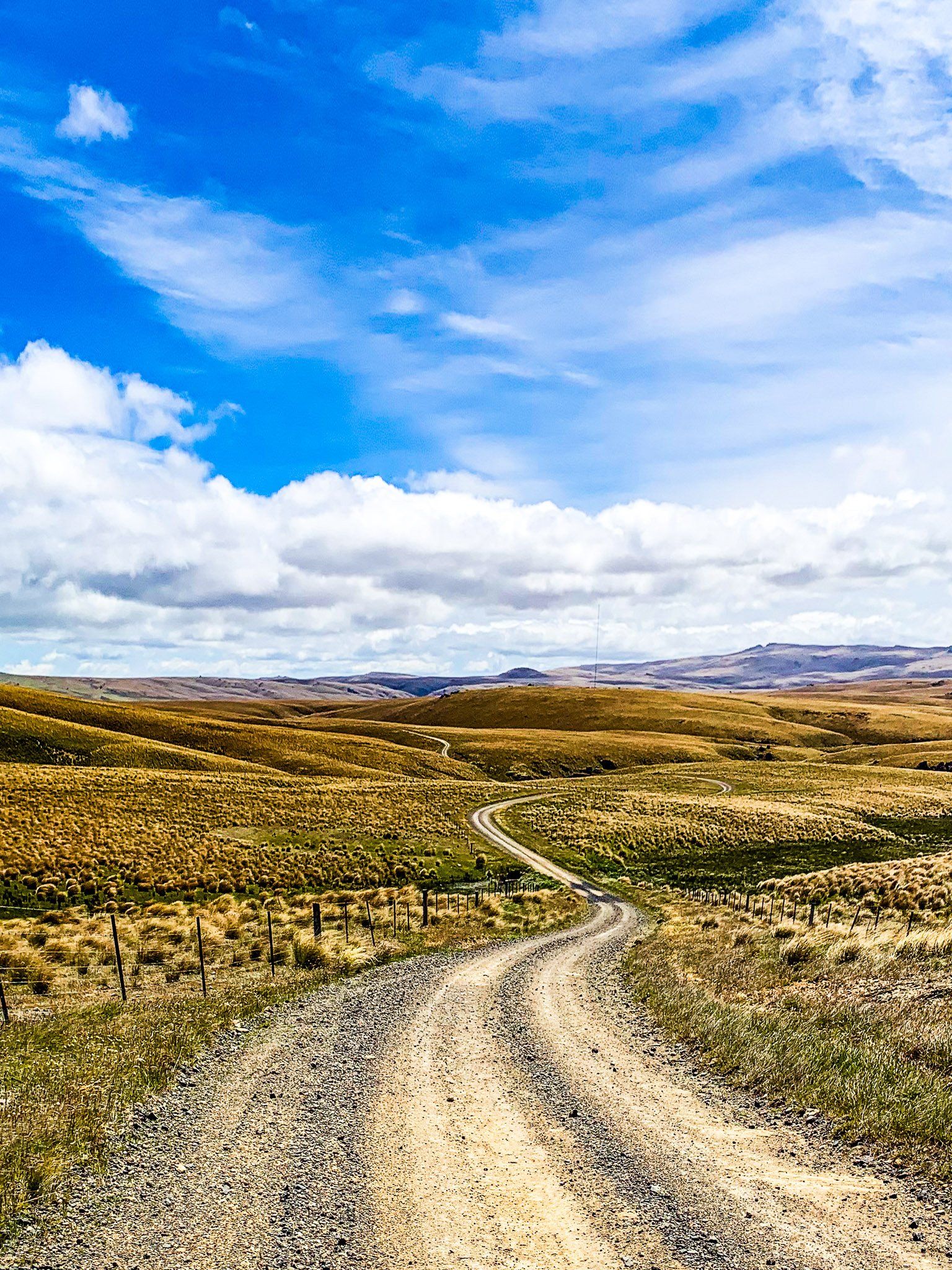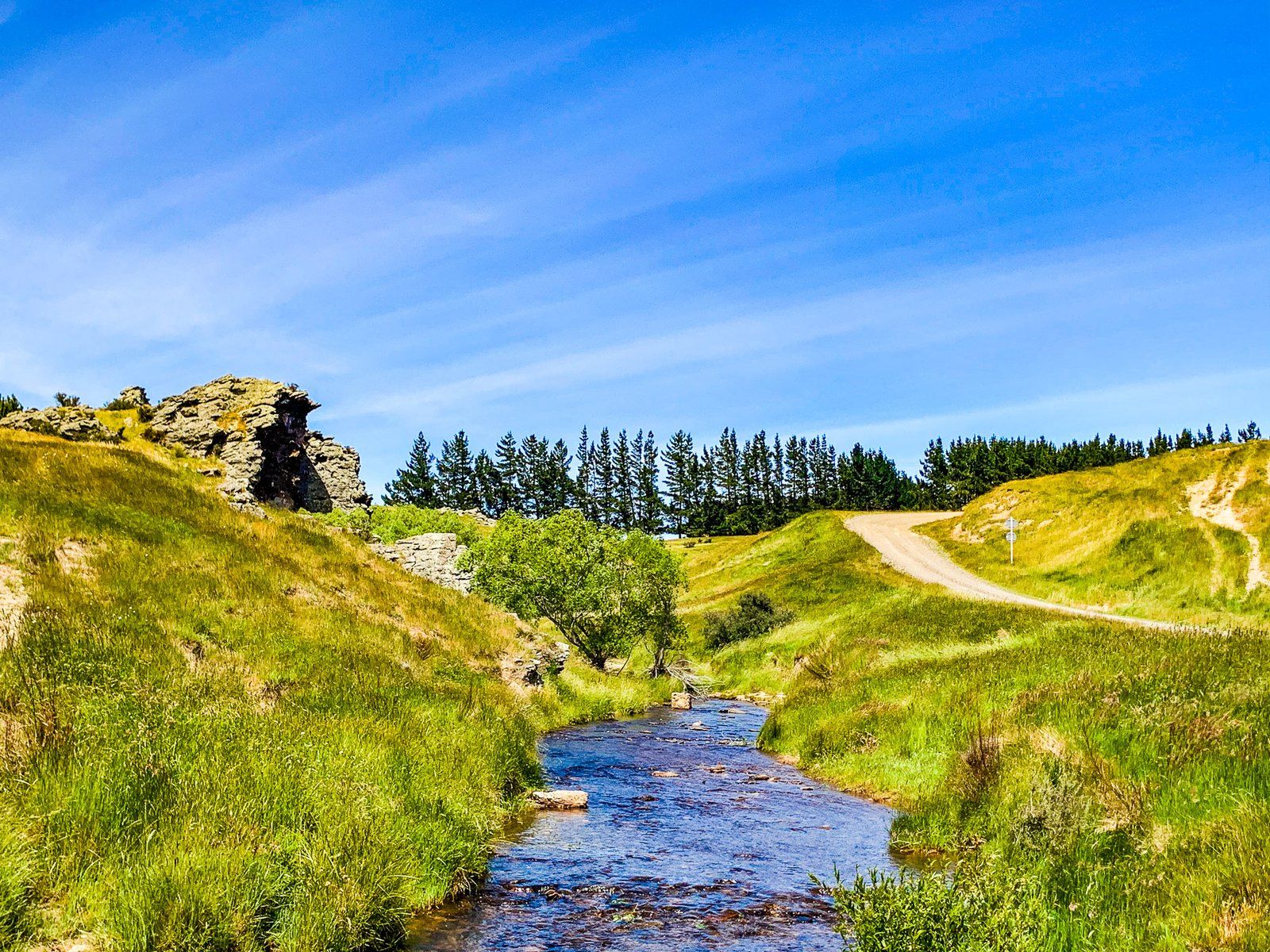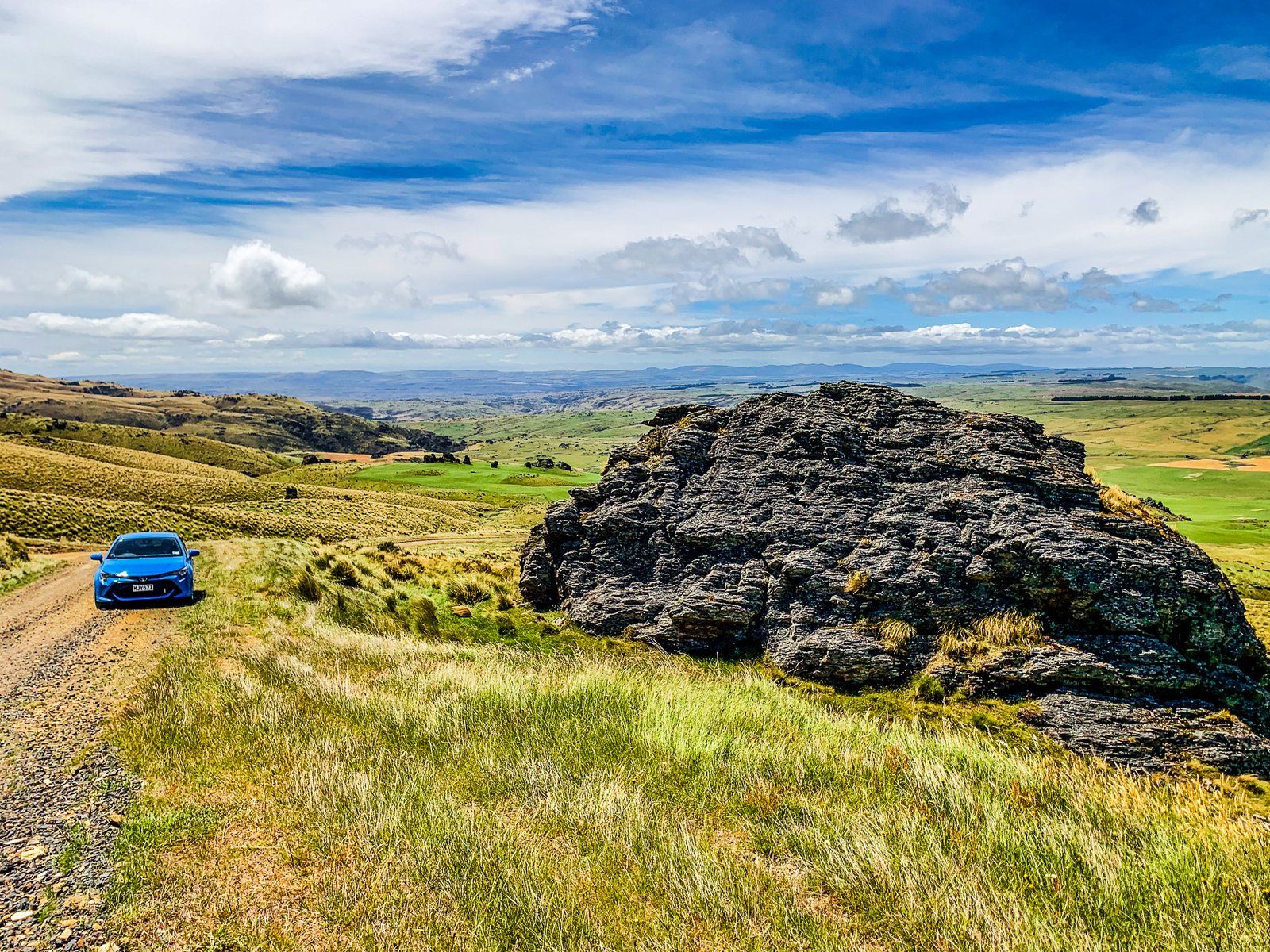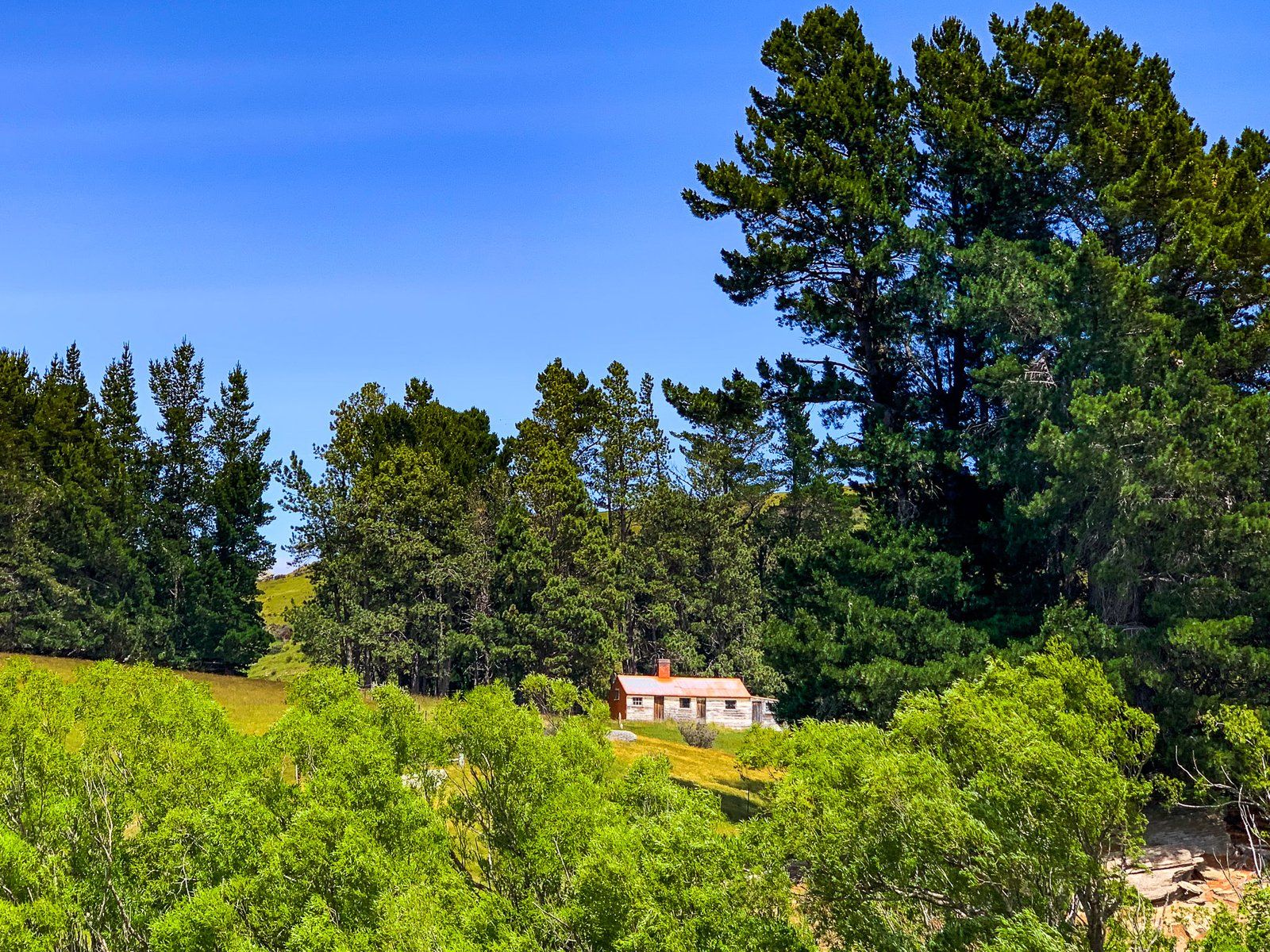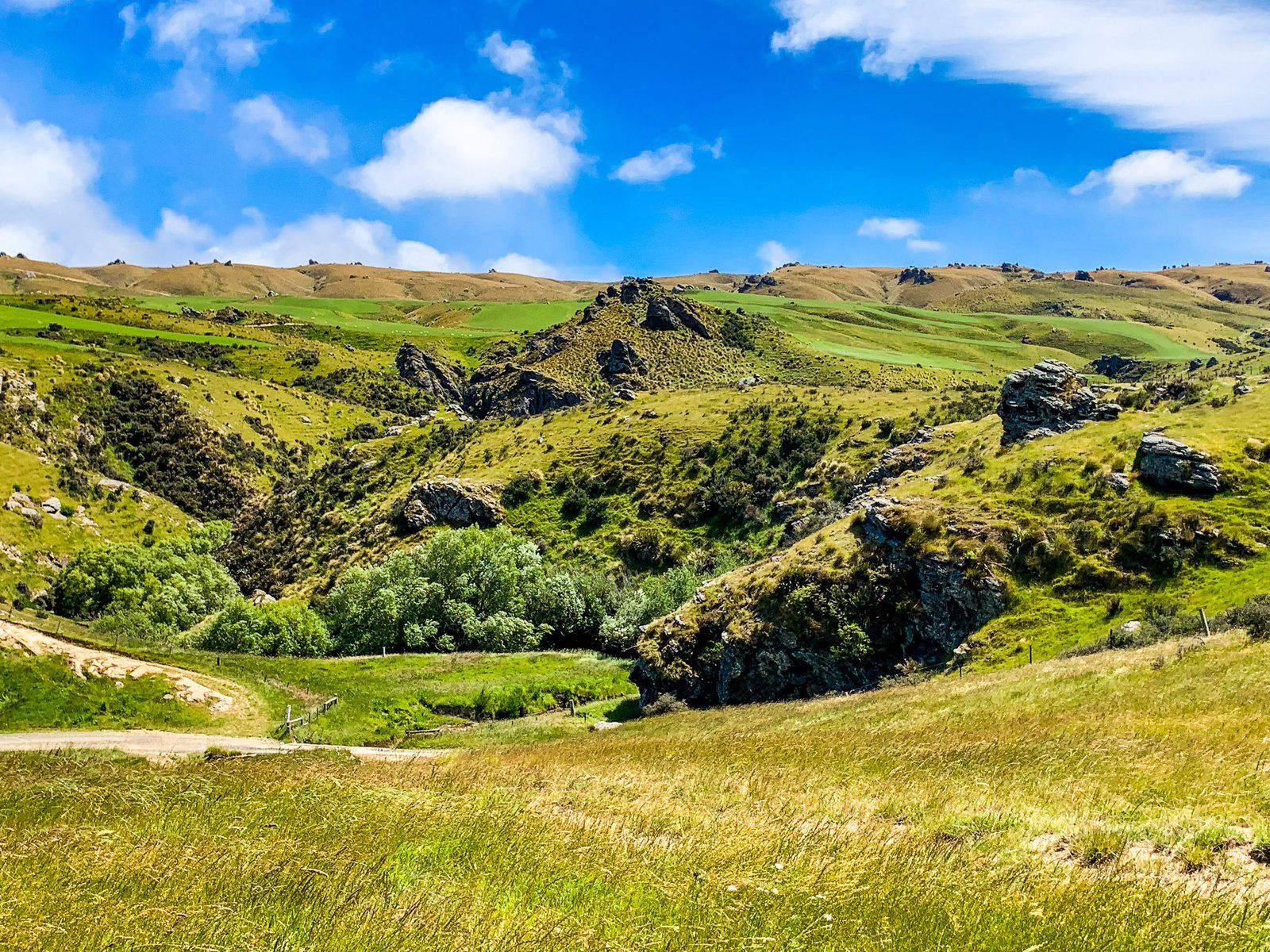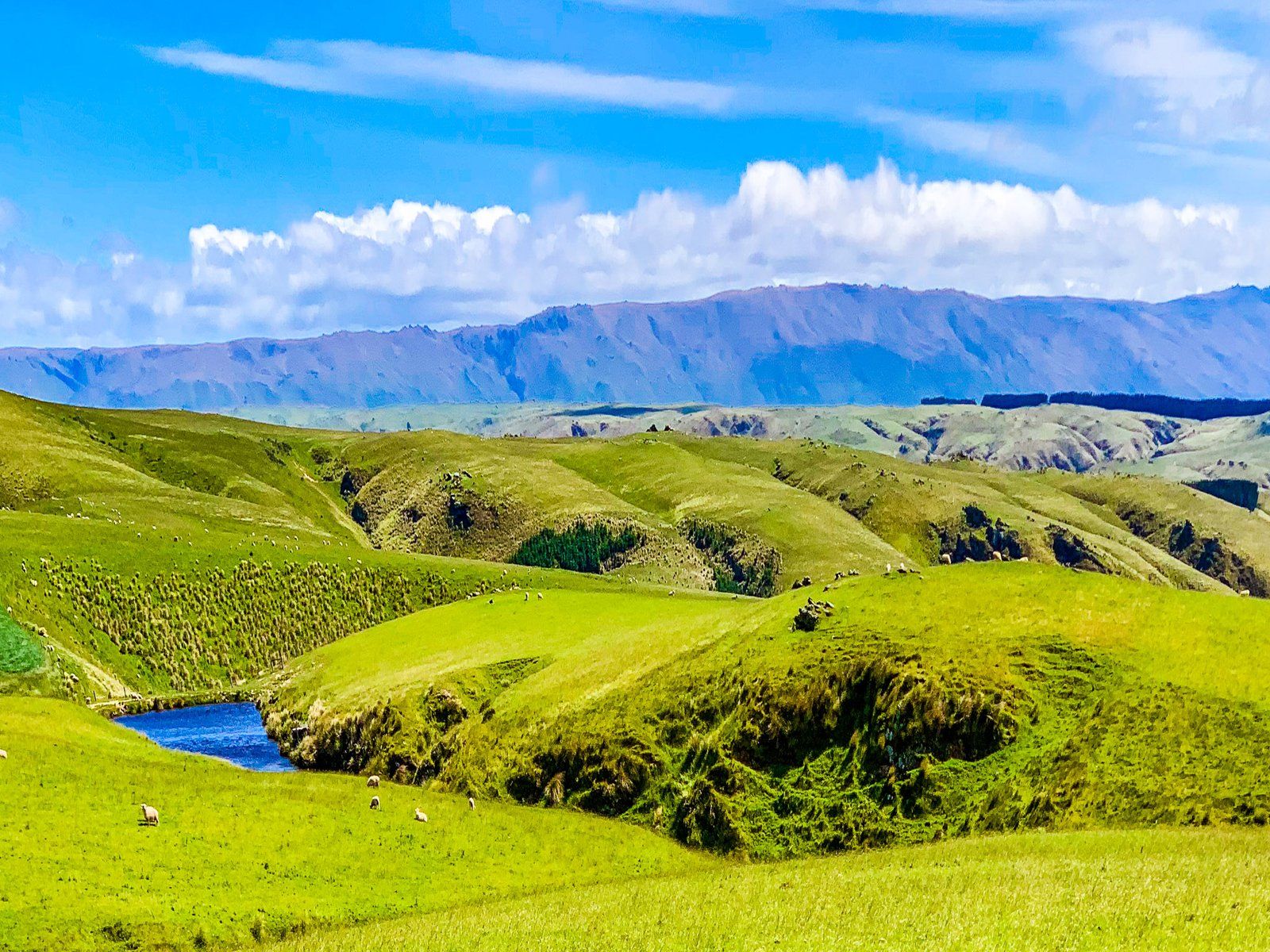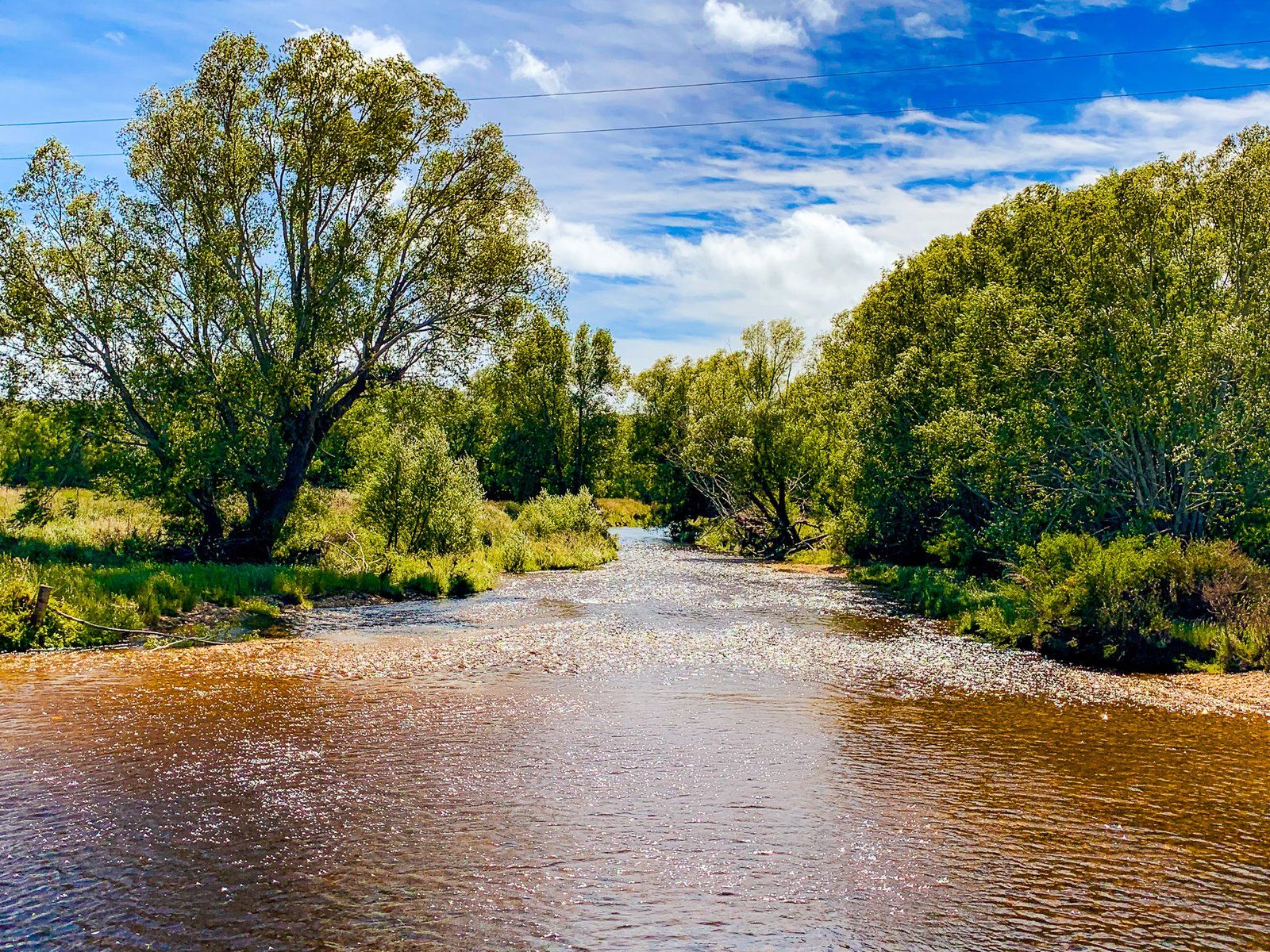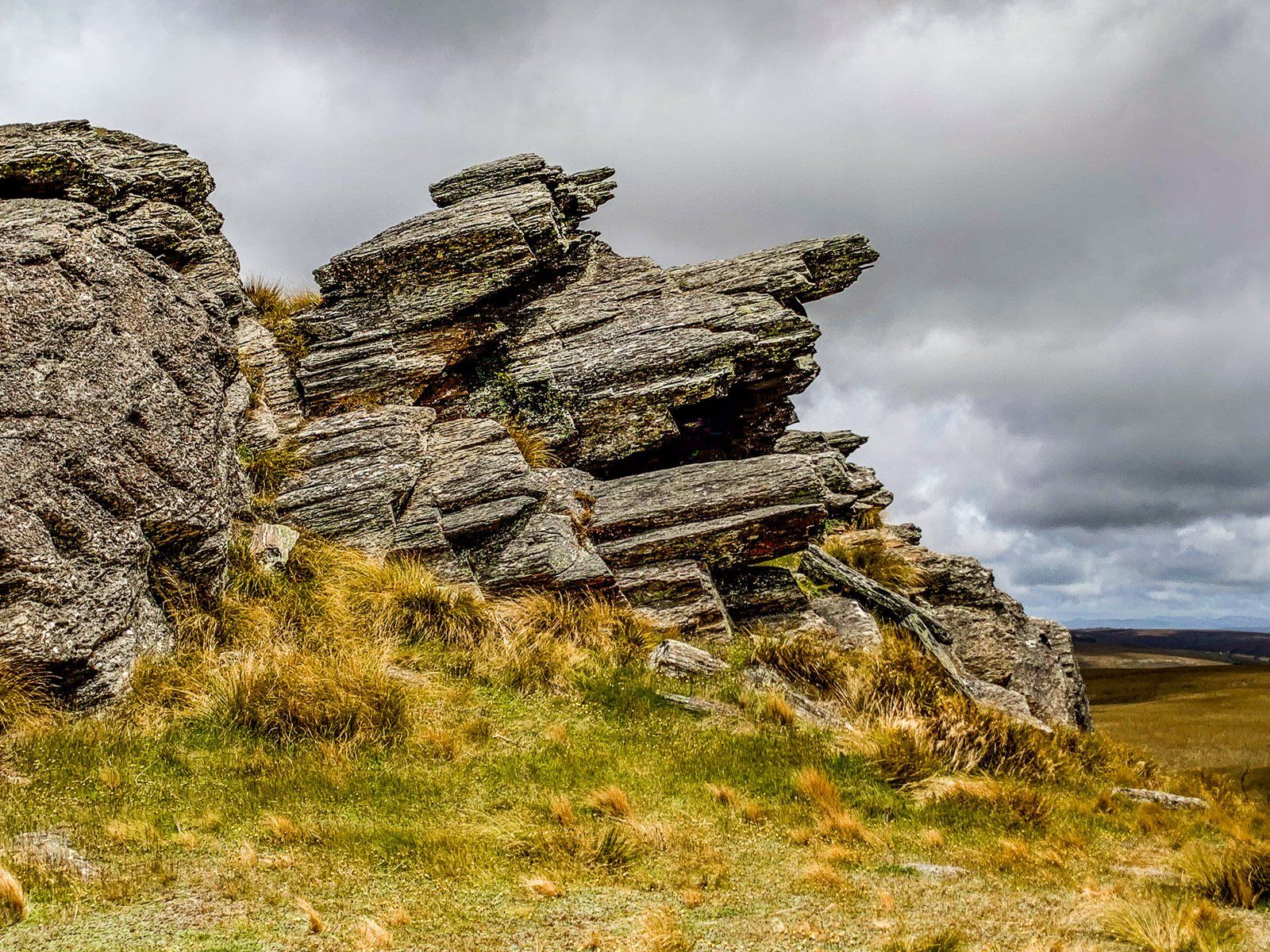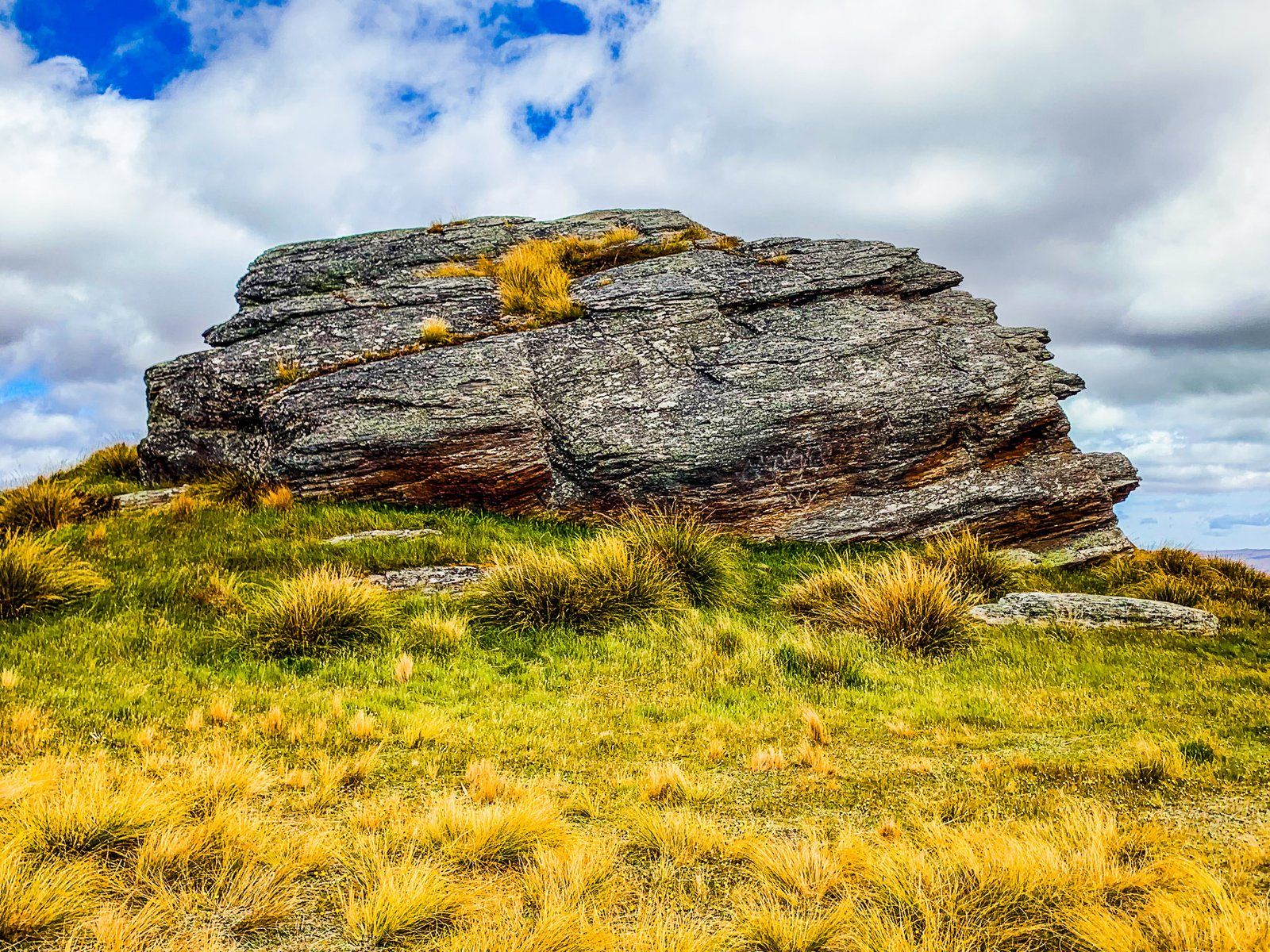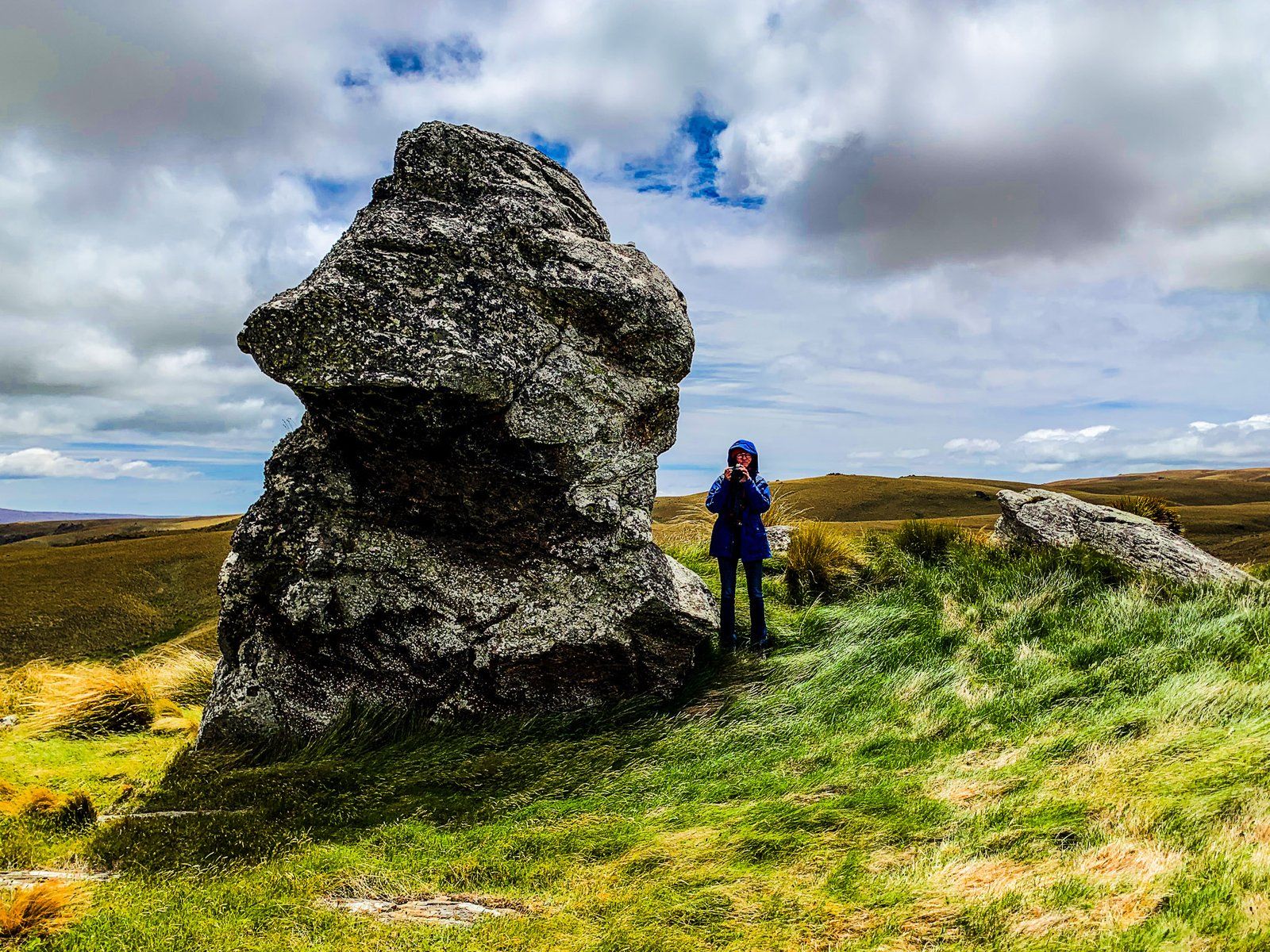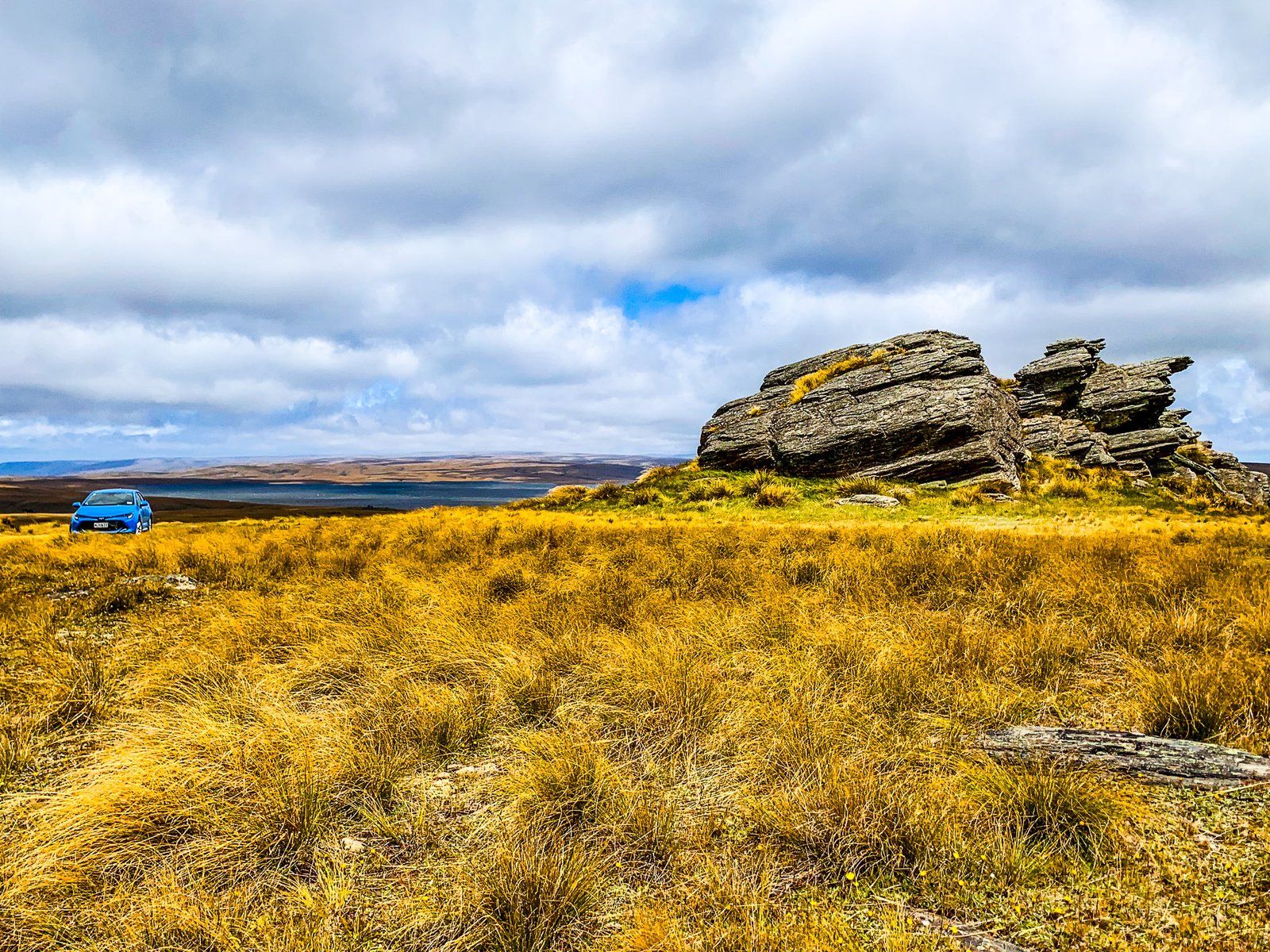The Old Dunstan Road, also known as the Dunstan Trail, was established in the early 1860s. It was one of several roads between the goldfields of Central Otago and Dunedin on the Pacific Coast. The trail provided the shortest way to the gold diggings around Clyde (then known as Dunstan). The road was also known as the Mountain Track due to its dangerous route over the remote Otago highlands bounded by the Lammemoor, Rock and Pillar, Lammerlaw, and Knobby mountain ranges.
After a sedate start at Clarks Junction on SH 87, the road crosses a flat-ish area of farmland at 550 metres. It then climbs between the Lammermoor and Rock and Pillar Range to 900 metres. The road passes by the Loganburn Reservoir and rises to 1,000 metres. It remains high for seven km, then drops steeply down to Paerau on the Taieri River. A second mountain section starts from the south end of the Upper Taieri Plain and goes over Rough Ridge at 900 metres to the Poolburn Reservoir before dropping down to the Ida Valley.
Today, the road is a remote driving adventure across often arid highland tussock and rocky tor landscapes. It is closed in winter, and the mountain sections are prone to heavy mud and rutting when wet year-round. A car in good weather is one thing; a stagecoach or wagon in bad weather was quite another!
In fine weather, it is feasible to make the trip in a 2WD, at least as far as Loganburn Reservoir from Clarks Junction or the Ida Valley to the Poolburn Reservoir. If you are doing the entire trip and are unsure, stick to a 4WD. It will be a long wait if you get stuck!
Overall, it is 46 km from Clarks Junction to Paerau. It’s then another 46 km over Rough Ridge to the Ida Valley. Mostly a slow drive, we recommend allowing at least four hours plus stopping time.
Lowlands
The Old Dunstan Road starts at Clarks Junction on State Highway 87 before the highway enters the southern end of the Strath-Taieri Valley. The first part of the Old Dunstan Road passes through farmland and is mostly very green. This contrasts with the much more arid highland sections to come, a reflection the intensive use of irrigation in an otherwise dry environment.
The road is sealed for the first 12 km, then continues as a well-maintained metal road. Up to Sutton Stream, the route is about 500 metres above sea level, relatively flat and wide with big skies and uninterrupted views. The main features are the odd gully, sheep flocks, and power pylons. A reasonable number of exotic trees around the creeks break up the wide open landscape. From there, the road climbs quickly to about 900 metres, dramatically changing the landscape.
Highlands
From the lowland plateau between Clarks Junction and Sutton Creek, the Old Dunstan Road climbs up to 900 metres, crossing a ridge between the Lammermoor Range to the southwest and the Rock and Pillar Range to the east. From this high point, there are spectacular views of the Central Otago highlands as they roll west of the Rock and Pillar Range. To the north, you will see the Loganburn Reservoir.
From there, the road swings north and passes the reservoir to the west at 850 to 900 metres. On the east side, there is a moderate slope up to the Rock and Pillar Range ridgeline at over 1,100 metres. Beyond the reservoir, the road climbs to 1,000 metres and stays there for about seven km. You will pass the access to the Stonehurst track (hiking and biking) that goes over the Rock and Pillar Range ridge, then drops 800 metres to the Strath-Taieri Plain.
The Rock and Pillar Ridge Road intersection is a bit further along. This is a 4WD track that provides access to the ridge and peaks of the Rock and Pillar Range and a steep route down to Middlemarch. As you reach the high point on the road, there is an obvious place to stop to look back across the reservoir and explore the alpine environment.
